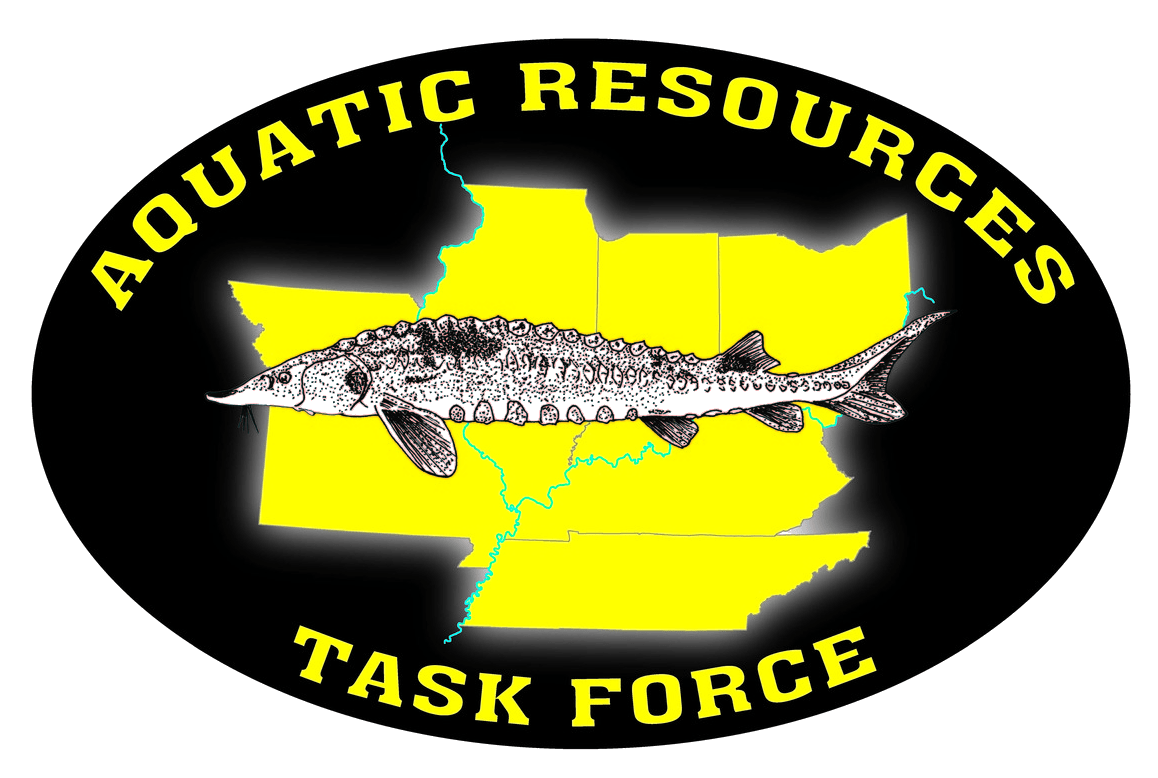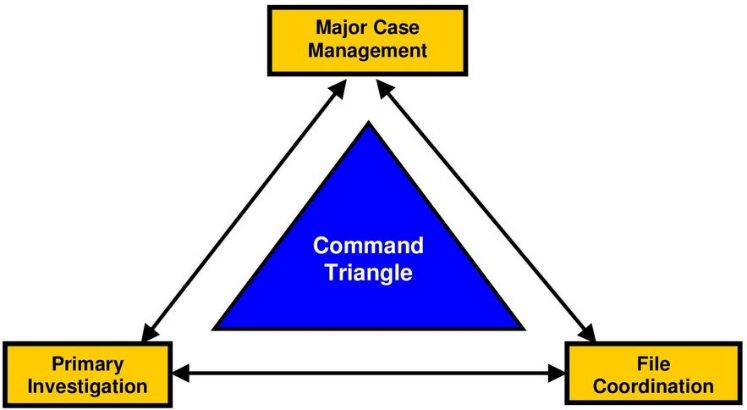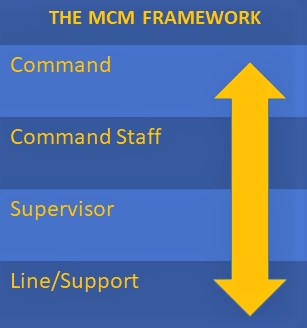See the story HERE!
Proud to be partnered with Visallo who just keeps getting stronger and stronger!!!
See the story HERE!
Proud to be partnered with Visallo who just keeps getting stronger and stronger!!!
(September 20, 2018) Austin, TX – Case Closed Software® announced today that a 5 State Natural Resources/Law Enforcement Task Force has begun working on the Case Closed Cloud™ platform for advanced investigative case management.
 The task force – consisting of natural resources law enforcement agents from Illinois, Tennessee, Ohio, Indiana, and Missouri – selected Case Closed Cloud due to its ease-of-use, quick deployment model, and cost-effective pricing.
The task force – consisting of natural resources law enforcement agents from Illinois, Tennessee, Ohio, Indiana, and Missouri – selected Case Closed Cloud due to its ease-of-use, quick deployment model, and cost-effective pricing.
“We are thrilled to add another big name multi-jurisdictional task force to our group of cloud customers, said Douglas Wood, CEO of Case Closed Cloud’s parent company Crime Technology Solutions, LLC. “Our SaaS offering is now used by agencies, security firms, drug task forces, and other investigative organizations both here in the U.S. and overseas”,
Case Closed Cloud is an ultra secure, CJIS-compliant investigation case management system designed for investigative agencies that want to stay organized and manage cases more easily. The browser-based system includes functionality for tracking cases, investigator actions and supplemental reports, evidence (both physical and electronic), reporting, tips and leads, and much more.
“Cloud software has so many benefits for law enforcement. It is the fastest growing segment of the market by far.” added Mr. Wood.

For more information on how Case Closed Cloud can help you revolutionize your investigative unit, visit https://www.caseclosedcloud.com
Let’s face it… RMS software, by and large, is not designed for managing major cases. Agencies know it, and the RMS vendors know it. For them, the notion of managing the complexities of major case investigations is an afterthought at best.
(The answer I give to these inquiries, by the way, is that any good investigation management software should have capabilities to ingest data from other law enforcement products, including RMS).
The more important point, however, is recognizing that criminal investigators gather vasts amounts of information during the course of an investigation. Witness statements, interviews, interrogations, tips, leads, informant statements, audio files, video files, photos, and much more. Too often, agents must rely on their RMS systems which, per above, are not purpose-built for investigations. Investigators also rely heavily on paper files and file cabinets full of notes, search warrants, and physical evidence.
Fortunately, there is an alternative… purpose built investigation case management software that utilizes what I call ‘Case Actions’ as the underlying workflow. Case Actions are the individual actions that an investigation unit takes in pursuit of closing a case. These are the investigative supplemental reports. Case Actions are expansive in nature, and include:
… and much, much more. You get the idea, though.
By effectively logging each Case Action in a particular Case, the investigators (and management) are able to quickly and visually recognize the status of the case, and what further actions should be taken. Each Case Action leads to new information… which leads to new Case Actions. And the beat goes on. Hopefully, sooner rather than later, enough information is garnered to close the case. That’s the power of Case Action based workflow.
With the Case Action based approach, each Case Action is tied to Persons, Locations, Vehicles, etc. As a result, robust dossiers of these things are built without the individual agent(s) even realizing it.
By utilizing an investigation case management solution that is based upon Case Actions, law enforcement can leverage information from previously-entered data such as telephone numbers, evidence items, addresses, persons, gang members, etc. The Case Actions feed themselves – and each other – to build a valuable repository of investigative information.
An example: A detective has received a tip that Doug Wood is involved in a particular criminal activity. By accessing her Case Action-based system, she quickly learns that Doug Wood has been a Suspect in Case 1 (belonging to an entirely different investigator), and a Witness in Case 2 (belonging to a third investigator).
She also learns (via Case Actions performed by the Gang Unit) that Doug Wood shares an address with a confirmed Gang Member and goes by the nickname ‘Woody’. She also sees Doug’s previous addresses, telephone numbers, work history, social media accounts and so on… each of which has been logged as part of completely unique Case Actions.
That is the power of Case Actions based investigation management software. Because each previous Case Action involving Doug Wood was logged, the current investigator has a goldmine of information at her fingertips.
Case Closed Software is the leading provider of Case Action based investigation case management software for law enforcement. Contact Us for a demo today!
Several times each week, I receive an inquiry from a PD, task force, or Sheriff’s office asking if my investigation case management software, Case Closed Software, can interface with a particular Records Management System (RMS). The question stems from the investigation unit’s desire to have a purpose-built, flexible solution designed to help their agents stay organized and work more efficiently.
Let’s face it… RMS software, by and large, is not designed for managing major cases. Agencies know it, and the RMS vendors know it. For them, the notion of managing the complexities of major case investigations is an afterthought at best.
(The answer I give to these inquiries, by the way, is that any good investigation management software should have capabilities to ingest data from other law enforcement products, including RMS).
The more important point, however, is recognizing that criminal investigators gather vasts amounts of information during the course of an investigation. Witness statements, interviews, interrogations, tips, leads, informant statements, audio files, video files, photos, and much more. Too often, agents must rely on their RMS systems which, per above, are not purpose-built for investigations. Investigators also rely heavily on paper files and file cabinets full of notes, search warrants, and physical evidence.
Fortunately, there is an alternative… purpose built investigation case management software that utilizes what I call ‘Case Actions’ as the underlying workflow. Case Actions are the individual actions that an investigation unit takes in pursuit of closing a case. Case Actions are expansive in nature, and include:
… and much, much more. You get the idea, though.
By effectively logging each Case Action in a particular Case, the investigators (and management) are able to quickly and visually recognize the status of the case, and what further actions should be taken. Each Case Action leads to new information… which leads to new Case Actions. And the beat goes on. Hopefully, sooner rather than later, enough information is garnered to close the case. That’s the power of Case Action based workflow.
WIth the Case Action based approach, each Case Action is tied to Persons, Locations, Vehicles, etc. As a result, robust dossiers of these things are built without the individual agent(s) even realizing it.
By utilizing an investigation case management solution that is based upon Case Actions, law enforcement can leverage information from previously-entered data such as telephone numbers, evidence items, addresses, persons, gang members, etc. The Case Actions feed themselves – and each other – to build a valuable repository of investigative information.
An example: A detective has received a tip that Doug Wood is involved in a particular criminal activity. By accessing her Case Action-based system, she quickly learns that Doug Wood has been a Suspect in Case 1 (belonging to an entirely different investigator), and a Witness in Case 2 (belonging to a third investigator).
She also learns (via Case Actions performed by the Gang Unit) that Doug Wood shares an address with a confirmed Gang Member and goes by the nickname ‘Woody’. She also sees Doug’s previous addresses, telephone numbers, work history, social media accounts and so on… each of which has been logged as part of completely unique Case Actions.
That is the power of Case Actions based investigation management software. Because each previous Case Action involving Doug Wood was logged, the current investigator has a goldmine of information at her fingertips.
Case Closed Software is the leading provider of Case Action based investigation case management software for law enforcement. Contact Us for a demo today!
In the first chapters of this series, Managing Major Cases, I focused on what defines a major case… and what are some of the unique problems associated with different major case ‘types’. For reference, you can find our previous chapters below:
Managing Major Cases: Part One
Managing Major Cases: Part Two
Managing Major Cases: Part Three
In this chapter, I want to overview the operational structure of Major Case Management.
The Command Triangle
Many Commonwealth countries (and some larger US jurisdictions) define Major Case Management roles within what’s called a “Command Triangle”. Specifically, per the diagram below, jurisdictions within countries such as Great Britain, and Canada define three (3) primary roles – a Major Case Manager who is responsible for the effective governance of the investigation, a Primary Investigator who reports to the Major Case Manager, and a File Coordinator who is responsible for coordination for internal communication and case file management.
Let’s take a look at the responsibilities of each role:

As part of this Command Triangle, the Major Case Manager is accountable for the overall investigation. He or She determines investigation strategies, identifies and manages investigative resources, conducts case reviews, and all other high-level management functions.
The Primary Investigator typically reports to the Major Case Manager and is responsible for tasks including preparation of the case file for status meetings, ensuring that assignments are completed in a timely fashion, identification of resources required for the investigation, and report any major case updates to the Major Case Manager.
Also reporting to the Major Case Manager is the File Coordinator. Their job is also multi-faceted, and includes tasks such as scrutinizing the documents created during the process of the investigation to ensure the completeness and quality, ensuring that tips and leads are assigned and managed, ensuring the security of the case file(s), ensuring that all case actions are logged into the investigative case management software, and more.
Within these three roles are any number of supervisors and line staff that perform interviews, collect evidence, communicate with the media, and so on. Not to beat a dead horse here, but I’ll point out again that all of these roles may be performed by just a few people in some jurisdictions.
The Command Triangle vs. The Major Case Framework
I believe in The Command Triangle model but also strongly support a more US-centric model – The Major Case Framework. Perhaps the differences are subtle, but a Triangle is a hard shape with defined lengths and known, predictable angles. A Framework, however, is just that – a frame which, by nature, allows for additional flexibility than a hard shape. A frame is designed to support a structure, not confine it.
It’s this flexibility that makes the Major Case Framework ideally suited for the U.S. market. By that, I mean there are 200 or 300 law enforcement agencies in Canada, the majority of which have dozens or hundreds of officers. Down here, there are over 18,000 law enforcement agencies ranging in size from NYPD (More than 50,000 Officers) to Frenchtown, New Jersey (3 Officers). This type of variance requires the flexibility of a framework.
So, what is the Major Case Framework?
As noted in discussing The Command Triangle, managing major cases generally consists of organizational groups that perform different, but equally important, roles. The Major Case Framework, however, better recognizes the true nature of investigations by acknowledging from the outset that many, and sometimes all, of the roles are performed by only a small number of individuals and that role flexibility is part of day to day investigation work.

There are four main organizational groups within the Major Case Framework. They are defined as:
As noted in the MCM Framework diagram, in many organizations ‘Commanders’ will find themselves performing Line/Support functions, and Supervisors will often find themselves doing the roles defined in ‘Command Staff’. American Law Enforcement, particularly small and medium-sized agencies and task forces, require the flexibility of the framework in order to succeed.
It is important that any agency’s case management systems and processes allow for the flexibility of both the Command Triangle and the Command Framework.
 Douglas Wood is CEO of Crime Technology Solutions | Case Closed Software, a leading provider of serious investigation software to law enforcement, state bureaus, DA offices, and other investigative units. Doug can be reached directly HERE.
Douglas Wood is CEO of Crime Technology Solutions | Case Closed Software, a leading provider of serious investigation software to law enforcement, state bureaus, DA offices, and other investigative units. Doug can be reached directly HERE.
In Part One of this series, I overviewed a generally-accepted definition of Major Cases, and discussed some of the attributes that define them.
In Part Two, I began to probe the ‘types’ of Major Cases – specifically, Single-Incident Major Cases. These are cases that may, under different circumstances, not be Major Cases but for the identity of the victim, the identity of the suspect, the location of the incident, and/or the uniqueness of the crime.
Here in Part Three, I want to discuss the second ‘type’ of Major Cases – Multi-Incident Major Cases and – specifically – the problems associated with trying to investigate a case while related crimes are still occurring. (Spoiler Alert: It’s stressful)
Based upon interviews I have conducted with CID Commanders, Sheriffs, District Attorneys, and other law enforcement experts, there are several types of Multi-Incident Major Cases. Based on the patterns of the crimes, Multi-Incident Major Cases are classified into three basic categories – Mass crimes, Spree crimes, and Serial crimes
Mass Crimes – A Major Case mass crime involves multiple victims at one location during one continuous period of time, whether it is done within a few minutes or over a period of days. The term ‘mass murder’ springs to mind, and invokes images of Dylann Roof(Emanuel African Methodist Episcopal Church in South Carolina), James Holmes (2012 Aurora, CO. shooting in which he killed 12 people and injured 70 others at a movie theater), and James Loughner (2011 Tuscon, AZ shooting that killed 6 people and severely wounded US Representative Gabrielle Giffords).

There are other types of Major Case mass crimes, however, including mass assault, mass human smuggling, and other horrible crimes that need no further illustration here.
Spree Crimes – Spree criminals commit two or more serious crimes with two or more victims, but at more than one location. An important distinction about spree crimes is that there is no ‘cooling off’ period between the crimes.

An unfortunate example of a spree crime is that of Mark Barton. On July 29th, 1999, he walked into his office at Momentum Securities and opened fire, killing four people. Then he went next door to another company and killed five more people. Earlier in the day he had also murdered his wife and their two children. Multiple crimes in multiple locations with no cooling off.
Another example of a spree crime is the armed robber who hits a slew of pre-chosen banks on the same day, terrorizing employees in the process. The examples here are too numerous to mention, but they become Major Cases by virtue of their spree qualities. Again, this shows multiple crimes in multiple locations with no cooling off.
Serial Crimes – Serial criminals commit multiple crimes with multiple victims. Unlike spree criminals, however, serial criminals commit their crimes on distinctly separate occasions. There is a cooling off period between crimes.
Uniquely, serial criminals tend to plan their crimes meticulously and pre-select their victims and locations. Unlike mass crimes and spree crimes, serial crimes are differentiated in that the perpetrator tends to carefully select their victims, have cooling-off periods between crimes, and plan them carefully. Examples of serial criminals (especially serial killers) are far too easy to find and include The Zodiac Killer (in California in the late 1960s), Ted Bundy (confessed to killing 30 women), and Dennis Raider (The BTK Murderer who killed 10 people in Wichita between 1974 and 1991
A unique problem with Multiple Incident Major Cases
The major problem for law enforcement investigating Multiple Incident Major Cases, especially those that fall in the ‘serial’ category, is that new crimes are committed even as the investigation is underway. Resources can be stretched to their thinnest when a new crime is added to the serial list, and the public pressure for an arrest can overwhelm even the hardest of investigators. Hello, stress.

A common attribute of the successful serial crime investigators that I have spoken with is their ability to separate the pressure from the work. The crimes and their timing are unpredictable, the public demand for a resolution is powerfully serious, and ‘interested parties’ (think politicians) are breathing down the investigators’ necks. That’s a lot of pressure.
Just as in any profession, untreated stress can lead to major consequences. These consequences not only affect the individual investigator, but also those with whom he or she has daily contact, including family and friends. The investigators I have spoken with help alleviate the pressure through:
(A quick point of clarity and a disclaimer: Any discussion around the differences between mass criminals, spree criminals, and serial criminals is going to be lively, and is an ongoing source for debate among criminologists. This posting will undoubtedly include characteristics and definitions that some readers may not entirely agree with.)
 Douglas Wood is CEO of Crime Technology Solutions | Case Closed Software, a leading provider of serious investigation software to law enforcement, state bureaus, DA offices, and other investigative units. Doug can be reached directly HERE.
Douglas Wood is CEO of Crime Technology Solutions | Case Closed Software, a leading provider of serious investigation software to law enforcement, state bureaus, DA offices, and other investigative units. Doug can be reached directly HERE.
In Part One of this series, I provided my definition of Major Cases and went into some detail about some of the attributes that differentiate a Case from a Major Case. Moving ahead now, I want to take a look at the different ‘types’ of Major Cases and an overview of major case management.
One of the problems in dealing with Major Cases is that, because of the varying types of cases, there’s no firm blueprint for investigating them. Major Cases move in real time, and – based upon interviews I have conducted with Major Case Investigators – can generally fall into one of two categories – Single Incidents and Multiple (serial) Incidents.
This article tackles Single Incident Major Cases.
Single incident Major Cases are defined by one single criminal act so abhorrent to the socio-economic environment, that it alone creates intense pressure to apprehend the perpetrator(s). What makes the incident so abhorrent ranges from factors such as:
The identity of the victim: In September of 1996, at the height of tensions between The Bloods and The Crips, a 25 year old African American man is shot in a drive-by shooting on the streets of Las Vegas and dies a few days later. Unfortunately, young black men die far too frequently in times of gang tensions, and few of these cases ever elevate to the status of a Major Case. The victim here, however, was Tupac Shakur.
 Tupac was an American rapper and actor who came to embody the 1990s gangsta-rap aesthetic, and was a key figure in the feud between West Coast and East Coast hip hop artists. Simply put… he was famous as hell. Hence, a far-too-routine shooting became a Major Case in the blink of an eye. The case remains unsolved.
Tupac was an American rapper and actor who came to embody the 1990s gangsta-rap aesthetic, and was a key figure in the feud between West Coast and East Coast hip hop artists. Simply put… he was famous as hell. Hence, a far-too-routine shooting became a Major Case in the blink of an eye. The case remains unsolved.
The identity of the suspect(s): “We the jury in the above entitled action find the defendant, Orenthal James Simpson, not guilty of the crime of murder.” Thus ended the double murder trial of former NFL player and Heisman Award winner OJ Simpson. In what was deemed ‘The Trial of the Century”, Simpson had been charged with the June 13, 1994 killings of his ex-wife Nicole Brown Simpson, and her friend Ron Goldman.
 After weeks of testimony, and a clear nation-wide division between those who believed Simpson to be innocent and those who believed him guilty, Simpson was acquitted of the murders on October 3, 1995.
After weeks of testimony, and a clear nation-wide division between those who believed Simpson to be innocent and those who believed him guilty, Simpson was acquitted of the murders on October 3, 1995.
While the case of two relatively young and affluent Caucasians being killed in the generally safe area of Brentwood may have been newsworthy, it was the identity of the suspect that was the catalyst in this becoming one of the most famous single-incident Major Cases in American history.
The location of the crime: When a half-naked corpse, covered in cuts, bruises and bite marks, is found behind the Metropolitan Museum of Art in New York’s Central Park, you have the makings of a Major Case. The corpse was that of 18-year-old Jennifer Dawn Levin. Levin was murdered during the early morning hours of August 26, 1986.
 The ‘Met’, as the museum is known, is one of the most-visited and famous museums on the entire planet. Murders don’t happen in world-famous places like this, and the case became the top story on the evening news for months and months. That is one major single-incident Major Case.
The ‘Met’, as the museum is known, is one of the most-visited and famous museums on the entire planet. Murders don’t happen in world-famous places like this, and the case became the top story on the evening news for months and months. That is one major single-incident Major Case.
After an investigation into what the press dubbed “The Preppie Murder”, college student Robert Chambers was charged and tried for murder. The jury, however, remained deadlocked for nine days and a plea bargain was struck. (Chambers’ defense, you may recall, was that he had killed Ms. Levin during consensual ‘rough sex’.)
The uniqueness of the crime itself: Six year old girls in upscale Colorado neighborhoods aren’t supposed to die. They’re certainly not supposed to be murdered… especially in their own home while the rest of the family slept. Uniqueness has always surrounded the December, 1996 killing of young beauty queen JonBenét Ramsey in Boulder, CO.
 On the morning of December 26, 1996, John Ramsey found his daughter’s body with duct tape over her mouth and a cord twisted around her neck in the basement of the family home. John’s wife, Patsy, says she found a ransom note demanding $118,000 for JonBenét’s return – an amount that is purported to match exactly a recent work-related bonus that John Ramsey had received. Despite these odd circumstances, the couple retained lawyers and were not formally interviewed by police for over 4 months. (The case has never been solved, and Boulder Police have cleared the couple of any wrongdoing.)
On the morning of December 26, 1996, John Ramsey found his daughter’s body with duct tape over her mouth and a cord twisted around her neck in the basement of the family home. John’s wife, Patsy, says she found a ransom note demanding $118,000 for JonBenét’s return – an amount that is purported to match exactly a recent work-related bonus that John Ramsey had received. Despite these odd circumstances, the couple retained lawyers and were not formally interviewed by police for over 4 months. (The case has never been solved, and Boulder Police have cleared the couple of any wrongdoing.)
Tragically, it’s estimated that over 1500 children are murdered each year in America. JonBenét’s case may have been just another number in that truly sad statistic were it not for unique circumstances that surrounded it; it occurred in an upscale neighborhood, the victim was a young beauty queen, the ransom note matching the bonus, a possible crime scene contamination by father John, and ‘seemingly’ uncooperative parents that made this a single-incident Major Case.
In Part Three of this series, we examine some examples and problems associated with Multiple Incident Major Cases.
 Douglas Wood is CEO of Crime Technology Solutions | Case Closed Software, a leading provider of serious investigation software to law enforcement, state bureaus, DA offices, and other investigative units. Doug can be reached directly HERE.
Douglas Wood is CEO of Crime Technology Solutions | Case Closed Software, a leading provider of serious investigation software to law enforcement, state bureaus, DA offices, and other investigative units. Doug can be reached directly HERE.
This is Part 1 of a series dedicated to the science (and art) of managing Major Criminal Cases in law enforcement. In order to begin a discussion on this subject, though, it’s important to define what makes an investigation a Major Case Investigation in the first place.
My friend, Chief Dan McDevitt, defines Major Case Management in his popular book ‘Major Case Management: A Guide for Law Enforcement Managers‘ as follows:
“A Major Case is a real or suspected crime of such severity that it creates an intense public demand for identification, apprehension, and prosecution of the offender(s).”
– Chief Daniel McDevitt
Irrespective of how your own definition may vary from Chief Dan’s, this much is simple; Major Cases are serious criminal matters. The degree of ‘seriousness’, however, is almost entirely relative. A stabbing in Chicago may not, by itself, be ‘serious’ as viewed by the public at large. Conversely, a sexual assault on a small University Campus may be extremely ‘serious’.
Make no mistake… neither are good or acceptable, and both are, of course, unthinkable violations. The point here is that cases may be Major Cases (or not) by virtue of the relative socio-economic environment in which they are being investigated.

Attributes of a Major Case. You probably have a Major Case when..
All of that said, there are several attributes which are common in major case investigations:
Having placed some parameters around what defines a Major Case, we will look deeper into the unique problems associated with these types of investigations. Stay tuned for Part Two of this series.
 Douglas Wood is CEO of Crime Technology Solutions | Case Closed Software, a leading provider of serious investigation software to law enforcement, state bureaus, DA offices, and other investigative units. Doug can be reached directly HERE.
Douglas Wood is CEO of Crime Technology Solutions | Case Closed Software, a leading provider of serious investigation software to law enforcement, state bureaus, DA offices, and other investigative units. Doug can be reached directly HERE.
As we have noted in previous posts, “The Cloud” is one of those terms that seem intimidating to the uninitiated. You hear about it all the time, yet many people aren’t quite sure what it is, exactly. This misunderstanding of technology is seen in all sorts of environments, from business to law enforcement.

This is especially unfortunate in the world of law enforcement because using cloud-based solutions can enhance productivity, foster better communication between agencies, and reduce operating costs. Simply put, law enforcement must adapt to this internet-based technology or be left in the 20th century.
Traditionally, police data has been kept in separate hubs referred to as “siloes”. Each type of task a law enforcement officer performs may require accessing data from a different silo. For example, a detective may need to access arrest records and phone records from two different places. With cloud-based solutions, police can access or submit data from any device that is linked to a single central hub. This cuts out a ton of unnecessary clerical work and leaves law enforcement with more time and resources to actually enforce the law.

Accessing crucial data from mobile devices allows officers to be more situationally aware as well, which increases officer safety. Additionally, rather than hosting their own servers and maintaining physical records of data, agencies can spend just a fraction of the cost for access to servers hosted off-site, in the cloud, without forfeiting any ease of access.
The cloud is also becoming less cost prohibitive. Cloud services are not only becoming less expensive, but the ability to pay for only the data that is used is an advantage for agencies that previously had to guess how much bandwidth or server space they would need. Additionally, ease of access to security updates keeps vital information secure from malicious hackers who would access the data for nefarious purposes.
The cloud is the obvious solution for data storage in the 21st century. From business to law enforcement, organizations that utilize the cloud can be sure there are clear skies ahead.
Douglas Wood is CEO of Crime Technology Solutions, LLC and Case Closed Software, a provider of on-premise and cloud-based investigation software for law enforcement and other investigative agencies.
BROOKLYN, Iowa — Mollie Tibbets, the 20 year old college student from the great state of Iowa has been missing since July 18th. The search is now well into week 3 after she disappeared while jogging in the area of Brooklyn, Iowa. Her case has hit headlines across the nation, and we have all seen her photo on our television screens over and over again.
First and foremost, we all certainly hope that Ms. Tibbets is found alive and well soon. Secondly, though, is the question of why cases such as hers go ‘viral’ while similar cases wallow in obscurity.
There are, according to most sources, somewhere around 100,000 people ‘missing’ in the United States at any given time. That’s the entire population of South Bend, Indiana. Approximately half of these missing persons are under the age of 21.
So, what makes a case such as Mollie Tibbets stand out from this crowd? Cynics would suggest that attractive, young, white females such as Ms. Tibbets garner more attention than other cases. A middle aged African American man who disappears is simply not as salacious and reportable a story, some might say.
Others would argue that cases such as Mollie Tibbets’ are newsworthy because they are uncommon. There seems to be a relatively small percentage of missing persons where the individual just disappears for no discernable reason, with no investigative leads, and with no good working theories. Perhaps this is true.
According to published data, almost 96 percent of missing persons in 2017 were runaways, and just one-tenth of a percent were abductions by strangers. Assuming (and we hope not) that Mollie Tibbets was abducted, that makes her case 1 in 1,000 as far as statistics go.
Factor in, also, that of all ‘missing persons’ under 21 years of age, just 53% are female, and of those, 57% are Caucasian. Suddenly Ms. Tibbets’ case is one of 30 in 100,000 at any given moment in this country.
The other things that separate these types of cases from the pack is the ability of family, friends, and law enforcement to raise public awareness. In the case of Mollie Tibbets, the reward for information leading to her discovery now tops $300,000.00. That type of reward is simply not accessible in the vast majority of missing persons cases.
Of major concern to family and friends of any missing person is the unfortunate fact that, in many states, it is not mandatory to report missing person cases to a national database designed specifically for the purpose of finding their loved ones. Perhaps that is a law that can be changed – and changed quickly.
In the meantime, we are left to wonder the whereabouts of Mollie Tibbets and 99,999 other missing persons. We hope for the best, and wish all of those cases could be as well publicized as this one.
August 21, 2018 UPDATE: UNFORTUNATELY, THE BODY OF MOLLIE TIBBETTS WAS FOUND TODAY. MAY SHE REST IN PEACE.
Douglas Wood is CEO of Crime Tech Solutions | Case Closed Software, a provider of investigation software for law enforcement agencies around the globe.